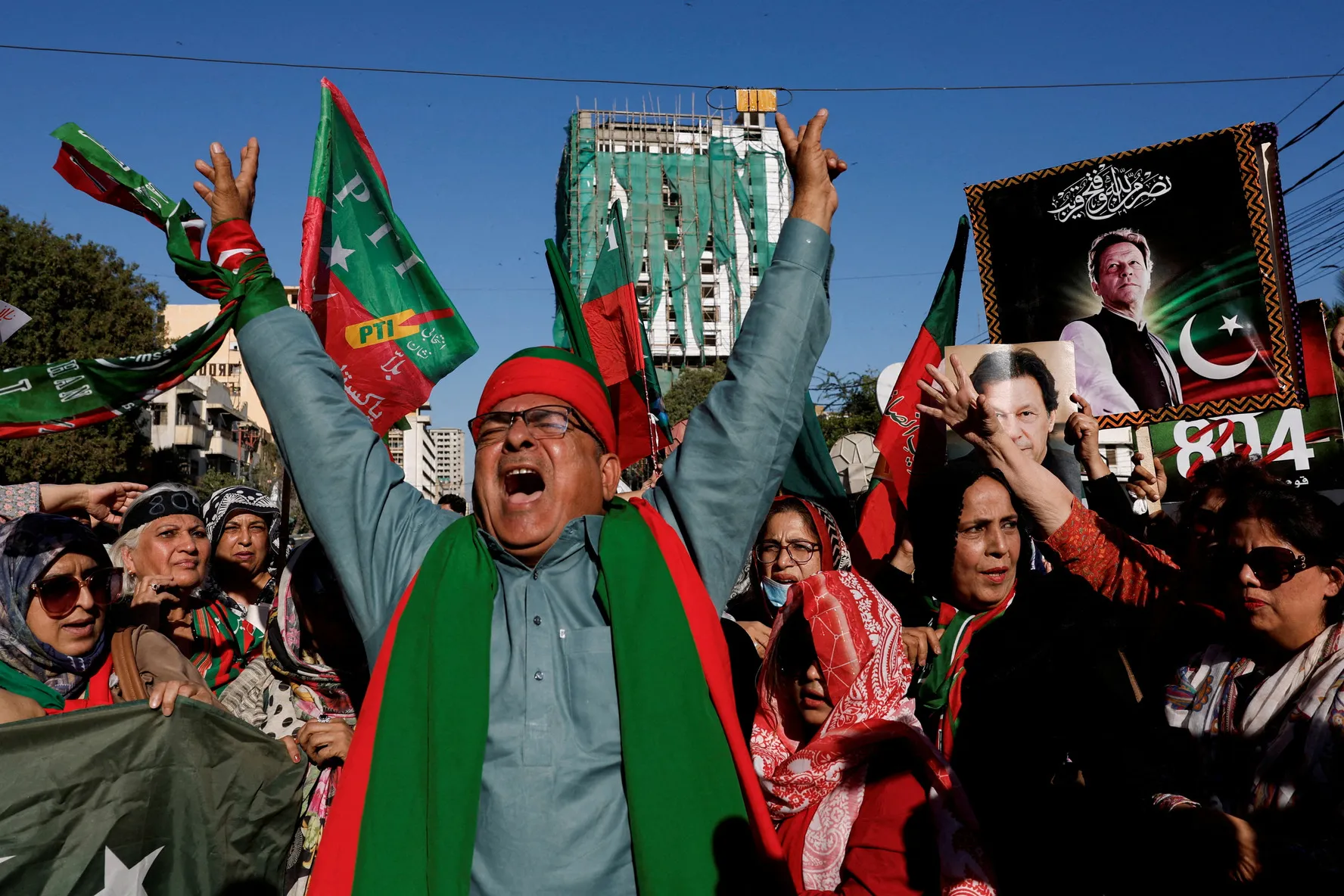In the tumultuous landscape of Pakistani politics, Imran Khan’s journey from a cricket star to a prominent political figure has been nothing short of a rollercoaster. In the 1980s and 1990s, Khan served as an all-rounder on the Pakistan cricket team and was regarded as one of cricket’s best. However, in 2018, Khan was elected to the office of Prime Minister of Pakistan, and he served until April 2022, when the National Assembly removed him from office via a vote of no confidence. Unfortunately for Khan, though, his troubles did not end there. In May 2023, authorities arrested the ex-PM on corruption charges at a court appearance in Islamabad. While Khan maintains that the charges are politically motivated, in January, a special court sentenced him, along with his wife, to 14 years in jail. Nevertheless, several days after Pakistan’s general election on February 8, 2024, the Election Commission of Pakistan confirmed that against all odds, Khan’s Pakistan Tehreek-e-Insaf (PTI) party won the most national parliament seats, though the PTI’s 93 spots ultimately fell short of the threshold to form a government. The results raise the question: how did Imran Khan win an election from jail?
Understanding the post-Khan era is essential for comprehending the dynamics of Pakistani politics. The economic impact of Khan’s removal, the electoral power of young voters, and the PTI’s unique campaign strategies are why Khan succeeded in this election cycle. These factors converged to sweep Khan to his improbable victory.
The first ingredient to Khan’s success was economic. Without his leadership, Pakistan saw a rise in inflation and a major depreciation of its currency. In August 2023, the Pakistani rupee hit an all-time low of 299 rupees to 1 U.S. dollar after the removal of import restrictions that Khan had enacted the previous year. Additionally, the Pakistani consumer price index (CPI) climbed to 27.4% in the same year, indicating a stark increase in the price of goods for a typical Pakistani consumer. From a voter’s perspective, this data implies that the country suffered without Khan, and most voters do not want to support a government that costs them more money, swaying the individuals who have felt the impact of inflation and depreciation toward electing members of Khan’s party.
Another large factor in the PTI’s victory was the makeup of the electorate in the recent election. The turnout of young voters shocked the country; of the 128 million voters, about 44% are under 35. In a recent article from CNN, a 22-year-old, first-time voter, Rabiya Arooj commented, “Everyone can see where the preference lies. I wanted to give my first vote to Imran Khan.” To a significant extent, young voters turned the election around—it was their support for Khan and dedication to civil participation that brought home the win for the PTI.
Finally, the PTI was able to harness this vote with their innovative, two-pronged campaign, which utilized artificial intelligence (AI) and clandestine campaigning. The PTI employed masked female volunteers to distribute campaign material, relying on the perception of women as non-threatening to the public to avoid conflict. Some have referred to this secretive campaigning as “covert canvassing.” The party also leveraged generative AI to create videos of Khan delivering speeches from prison and organizing online rallies on social media platforms to reach the younger demographic. Despite disruptions to online events and challenges in physical campaigning, the PTI sought to reinforce its association with Khan through AI-generated content and digital initiatives, emphasizing his continued influence on the party. Voters often rely on performances in debates and speeches at campaign rallies to back the decision on who to vote for. With Khan being imprisoned, those in-person appearances were unfeasible. The PTI’s videos provided a more personal connection for Khan and the electorate.
The PTI’s campaign would likely have been incredibly unsuccessful without these crucial tools. No party won an absolute majority of seats, but the PTI won the most, and this vital victory would have been impossible without the economic evidence to support Khan, the turnout of the youth, and the PTI’s pioneering campaign strategies.
Nonetheless, even though this election was a huge victory for the PTI, there remains lingering uncertainty for the future of Pakistan. Given the formal announcement of a coalition government led by the military-backed candidate Shehbaz Sharif, who leads the Pakistan Muslim League-Nawaz party, the PTI’s victory appears hollow. Still, it is difficult to predict how the election results will ultimately pan out, and allegations of election tampering are now affecting the reliability of Sharif’s government. The U.S. State Department has ordered a full investigation of the election due to allegations of electoral violence and fraud by the military establishment, so nothing is set in stone for now.
Regardless, the PTI has altered the world of campaigning and election cycles. Imran Khan’s influence on the recent Pakistani parliamentary election from jail adds a captivating chapter to the country’s political narrative. By examining the multifaceted factors shaping public sentiment and the use of technology in the PTI’s political strategies, public citizens everywhere can further understand the evolving landscape of politics in Pakistan and beyond.
Featured Image Source: Brookings






Comments are closed.